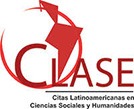A The art in the Portuguese military architecture of the Seventy
Abstract
When the subject of work is art and its relation to the military universe, it must be taken into account that this subject encompasses the teaching and practice of military architecture for a political-territorial defense between the sixteenth and eighteenth centuries. This science and art that taught Portuguese (and European) engineers to defend their monarch and their respective territories must be understood in the light of their representation, that is, the legitimating of sovereign power, both in their teaching (in the treaties of architecture military), and in its practice (the making of fortification plants). The language of art is perceptible, for example, when one of the greatest names of classical antiquity, which served as the theoretical matrix for these men, was Vitruvius. Among the six terms of Vitruvian architecture (order, disposition, eurythmy, symmetry, decorum and distribution) is the decorum that highlights the aesthetic notion for the construction of defense and, in turn, Portuguese cities in America.












